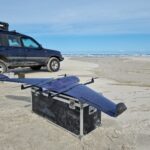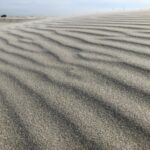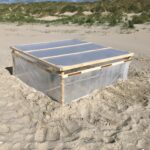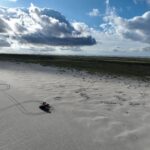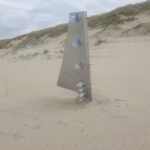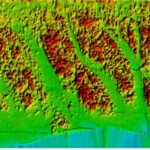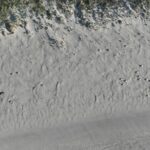Ammophila Dune Grass Experiments
Dune grasses play a crucial role in the development of sandy coasts. Along the northwest coast of Europe, sand couch grass (Elymus farctus) and marram grass (gen. Ammophila) are the two main dune-building species. It is generally believed that the pioneer sand couch grass has a facilitating role for the establishment of marram grass.
Share this project
Pioneering in dynamic dunes
The Fieldwork Company assisted researchers from NIOZ in setting up a field experiment on the eastern tip of Schiermonnikoog. The chosen location was ideal for this experiment because it is part of a dynamic ecosystem where the various successive dune zones and pioneer sand couch grass vegetation are present. In the field experiment, seedlings of marram grass were planted in existing pioneer sand couch grass vegetation, and 1000 marram grass plants were additionally planted on bare flat ground as a control.
Cautious approach
The Fieldwork Company’s part in this project was threefold. The first component is logistics – no roads run to the eastern tip of Schiermonnikoog. But our specially adapted Toyota land cruiser is perfectly equipped to transport the 1,000 plants over the sandy beach. As the dunes are a sensitive ecosystem in which no traces should be left behind, our specially developed ‘wad carts’ were used for transport from the car. These carts are made of light aluminium with thick balloon tyres, in order to move a lot of weight over loose sand or mud, without leaving deep tracks or sinking into the sediment.
Measuring and mapping plant hight
The second part was to provide field assistants to plant the 1,000 plants by hand. First, plant height was measured and then a dGPS was used to map the height of the plants at centimetre level to determine the impact of plant size on dune formation.
Measuring height from the air
The third part was to conduct an aerial survey of the area, in order to create an elevation model of the area, accurate to the centimetre, using a drone equipped with a PPK dGPS system. This allowed for extremely accurate mapping of dune shape and dune volume.
Thanks to the deployment of our VTOL fixed wing drone combined with a high-resolution camera, an area as large as 150 hectares could be flown in in an hour with a ground resolution of 0.77 centimetres per pixel. By conducting this drone survey several times over the year, the development of the area, and the role of the sand couch grass and marram grass are being monitored with high accuracy and on a large scale. Meanwhile, these experiments are being continued on both Schiermonnikoog and Texel.

Client
NIOZ

